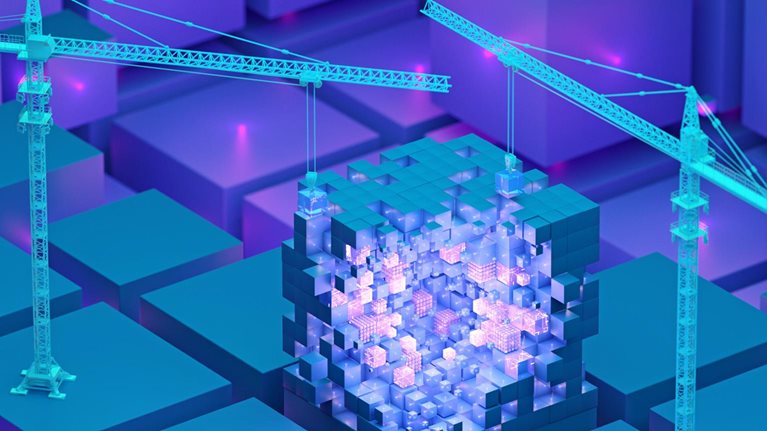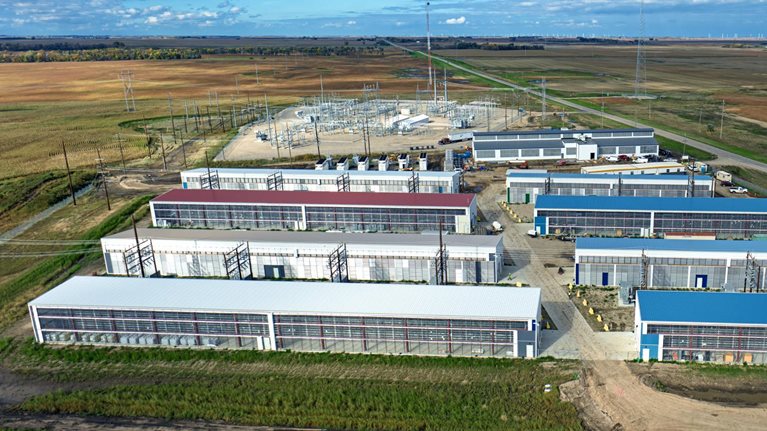Data centers represent the foundational infrastructure that fuels the many digital services that individuals, businesses, and governments rely on every day. This backbone of the digital economy is poised for significant growth as the demand for cloud computing and AI accelerates. States across the United States are already seeing a surge in interest and investment from hyperscalers and colocation providers1 looking to build out data centers.
Our analysis shows that by 2030, companies will invest almost $7 trillion in capital expenditures on data center infrastructure globally.2 More than $4 trillion of it will go toward computing-hardware investments, with the balance going toward areas such as real estate and power infrastructure (Exhibit 1). More than 40 percent of this spending will be invested in the United States.

While much is still unknown about AI’s growth trajectory and the related economic dynamics, the scale of AI investment could drive significant GDP growth, create thousands of high-paying jobs, and spur innovation across various sectors. Significant challenges exist, however—from infrastructure needs to consumer backlash—and state governments should develop a clear view of the true costs and benefits as they weigh their strategies.
Where the data center value is
States that can effectively plan, manage, and mitigate the risks of data center growth stand to unlock millions, perhaps even billions, of dollars in direct and indirect growth. At the same time, they can create high-paying jobs and establish themselves as leading digital-infrastructure hubs.
Northern Virginia exemplifies how strategic planning can harness data center growth. By investing in robust infrastructure, maintaining a reliable energy grid, and offering targeted tax incentives, the region accounts for 13 percent of the world’s data center capacity.3 At the same time, it has mitigated risks through local zoning controls and energy efficiency measures, while also becoming a global digital-infrastructure hub that has resulted in billions in supported economic output.4
Analysis by the Northern Virginia Technology Council and the Joint Legislative Audit and Review Commission suggests that data center investment could create value for states in four main ways (note that the specific circumstances of individual states will affect the potential):
- Economic growth. Investment in data centers can drive GDP growth, create thousands of high-paying jobs, and spur innovation across various sectors. Based on a study by the Northern Virginia Technology Council, the state of Virginia generated about $31 billion in supported economic output from data center construction and operations in 2023, as well as supporting services, with significant benefits to both state and local governments in collected taxes.5
- Jobs and skills. A typical large data center (around 250,000 square feet, for example) can add up to 1,500 workers on-site during the construction phase, requiring a crew of site developers, equipment operators, construction workers, electricians, and technicians, many earning wages upward of $100,000 per year (not including overtime). Many of these jobs do not require a college degree. For steady-state operations, more than 50 jobs can be created (for example, facility managers, engineers, technicians, and facility maintenance staff). Additionally, for every job inside a data center, however, an extra estimated 3.5 jobs are created in the surrounding economy (such as through upgrades to supporting infrastructure).6
- Cross-sectoral growth. Data centers can act as catalysts for tangential industries such as energy, telecom, cloud services, software, and manufacturing, spurring the development of additional elements of the data center value chain. Northern Virginia’s data center boom, for instance, increased power demand, leading Dominion Energy to build new substations and transmission lines (for example, the substation project in the region’s Haymarket area7). Data center growth in Loudoun and Prince William counties, in Virginia, often called Data Center Alley, led to a boom in real estate.8
- Innovation. The technological demands of data centers can help spur research and innovation. The power demands of data centers are driving innovation in green-energy and sustainable power solutions such as fuel cells, solar power, and small modular reactors. With the growth in the modularization of data centers, construction can be faster and more sustainable than traditional methods.9
Demand growth and shifts in data centers
Our analysis shows that global demand for data center capacity can more than triple by 2030, with a compound annual growth rate (CAGR) of around 22 percent (Exhibit 2). In the United States, data center demand could grow by 20 to 25 percent per year over the same period.

About 70 percent of that projected 2030 demand will come from hyperscalers, a trend already evident in the recent announcements of tech giants partnering with various US states to invest billions in constructing large-scale data center sites. Hyperscalers are working on building large campuses to capture the value of colocated compute, resulting in sites that often cover hundreds of acres. (For more about the analysis, see sidebar, “Methodology.”)
Four trends will be the biggest drivers of this demand:
- Growth of AI and high-performance computing. The rapid evolution of AI technology has resulted in the development of large language models with advanced reasoning capabilities (for example, OpenAI’s GPT-4) that are computationally more intense than previous versions. Gen-AI-led demand is estimated to be around 40 percent through 2030.
- The continuing growth of cloud migration and software as a service. Data center demand in the United States from cloud and other non-gen-AI-related drivers is projected to grow at 16 percent CAGR through 2023.
- The increasing digitalization of public services. We anticipate an increase in digitalized services in areas such as healthcare, the Department of Motor Vehicles, and digital identification for residents.
- Accelerating technology trends. Trends such as the Internet of Things and the rollout of 5G networks will drive additional technology needs, such as edge computing.
The surging demand is creating capacity challenges for primary markets, which are already saturated with data centers. A recent report from real estate firm CBRE shows record low vacancy rates of 1.9 percent in primary data center markets in 2024.10 For this reason, hyperscalers are turning to secondary, high-potential and emerging markets (Exhibit 3).

A closer look at the trade-offs
The rapid expansion of data center capacity brings significant challenges, especially for public infrastructure. States will need to carefully consider the following:
- Strains on power supply. Data center power needs in the United States are expected to add about 460 terawatt-hours of demand from 2023 to 2030, three times the current level of consumption (Exhibit 4). This substantial new load on regional grids, especially in constrained zones, will require new supply build-outs and incremental transmission expansion. The timelines for this infrastructure development can be challenging to meet with the rapid pace of data center demands. Additionally, the North American Electric Reliability Corporation anticipates low reserve margins and potential supply shortfalls across many regions.11 In some cases, the incremental demand is also adding tension to state decarbonization targets, complicating efforts to balance growth with sustainability.
- Water scarcity. Data centers need a lot of water, which can place stress on local water supplies. A recent report from WestWater Research forecasts that data-center-related water consumption in the United States is likely to increase by 170 percent by 2030.12 While site cooling configurations that rely less on water are available, they require substantially more power and involve less established technologies. Additionally, new power—particularly thermal plants—that come on line to support data centers have their own significant water demands for cooling. For example, the city council of drought-prone Mesa, Arizona, faced major resistance from the community when the council approved the building of a hyperscale data center that requires more than one million gallons of water a day.13
- Resource bottlenecks. Launching a data center requires significant land, labor, and equipment resources, which can be difficult to procure in states that are already using those resources. Finding trained talent specifically for data center and associated power infrastructure can be a challenge when those professionals are doing other electrical- and mechanical-installation work.14 These resource constraints could have a big impact on the timely completion and operational efficiency of new data center projects.
- Opportunity costs. Committing land and resources to long-term, capital-intensive projects such as data centers can entail significant opportunity costs. There is a risk of crowding out both other high-impact investments—such as manufacturing, residential, and urban development—as well as capital for building transport infrastructure such as roads. Furthermore, the tax breaks granted to data center companies might offset any gains, underscoring the opportunity cost argument.
- Risk of shelved projects. For all the investment, some hyperscalers have pulled back from or paused some of their commitments to building large-scale data centers. This may be the result of several factors, including economic uncertainty, power constraints, construction project delays, or potential oversupply of capacity. Additionally, AI and machine learning workloads are driving demand for specialized data center designs, requiring hyperscalers to reconsider existing plans. All these factors combined highlight the complexity of accurate demand forecasting over the medium to long term. For this reason, it is important to plan early in the process for mechanisms that share the responsibility for unfinished projects.
- Consumer backlash. The challenges listed here have the potential to create consumer objections to data center development. Governments will have to weigh the costs and benefits and, if they proceed, also be proactive in communicating the benefits to their communities (such as job creation beyond just those at the data centers themselves).

Each state will need to balance the economic benefits against their specific costs. Understanding where the economic benefits reach the diminishing point of marginal returns is both an analytical and strategic exercise. Ohio has relied on forward planning and thoughtful public–private partnerships to try to navigate these trade-offs, with some success. Over more than a decade, Ohio has increased its data center capacity by four times, and Amazon Web Services has recently announced a $1 billion addition to an earlier estimated $10 billion expansion of data center investment in Ohio.15
The government, economic-development agencies, utilities, and major tech firms have aligned on a strong incentive program, infrastructure investments, workforce training, and renewable-energy programs. Ohio, for instance, has offered partial or full sales tax exemptions for companies making significant investments in data centers (though these have led to public opposition). Some local governments in the state have also provided long-term property tax abatements.16
To provide infrastructure support, American Electric Power (AEP), which serves central Ohio, has initiated a broad transmission build-out and special-rate structures for data centers. AEP’s $2.82 billion strategic partnership plans to fund thousands of miles of new transmission lines across Ohio and neighboring states.17 In November 2024, AEP announced plans to deploy up to one gigawatt of Bloom Energy solid-oxide fuel cells at data center sites—a deal intended to supply immediate backup power while the grid is expanded.18
To strengthen the local workforce’s skills, Ohio has partnered with private organizations to establish training initiatives such as the STAR (Skilled Trades and Readiness) Program and data-center-technician certification programs that are offered by hyperscalers.19
Ten sets of questions for a winning data center strategy
States will need to address numerous considerations and plans in either building or expanding their data center efforts. Answering the following questions can help clarify their path forward:
- Industry trends. What will the next five to ten years of data center growth look like? Which players are investing, and what technologies are spurring this investment? How will the needs of data centers in the future evolve for construction, maintenance, and refurbishment?
- Strategic fit. How do data centers align with the state’s broader economic goals, such as rural development, establishing a semiconductor corridor, or realizing a tech hub vision?
- Partnership models. What are the right incentives, coinvestment mechanisms, and governance structures to enable success? How should the investment partnership be framed to achieve the state’s strategic economic goals, such as rural development and the entrepreneurial growth of small and medium businesses?
- Location strategy. Where are there shovel-ready or potential data center zones with adequate infrastructure and community alignment? How do existing data center sites influence these potential future locations such that the state can optimize resource use, enhance community support, and ensure equitable development in different parts of the state, ultimately leading to more sustainable and successful build-outs?
- Responsible stewardship of local resources. What are the thresholds of power, water, and land capacity that can sustainably support data center growth? How close is the state to reaching these thresholds?
- Cross-sectoral opportunities. What other opportunities might exist for related industry growth, such as power, sustainable resource management, cooling equipment, and telecommunications?
- Integrated economic model. What has the economic model for data center growth looked like so far? What are the (further) projected upsides (such as jobs, taxes, and growth) and risks (for example, utility costs and environmental impact)? Are the tax breaks offsetting gains to an extent where further investment in data centers is no longer beneficial for the state?
- Investment strategy. How should states plan their investments? What other parties or partners, such as energy, utilities, and other industrial players, need to invest as well? What is the most optimal labor strategy during construction and maintenance phases to ensure the availability of a skilled workforce and minimize delays?
- Community engagement plan. How can states engage local communities to ensure alignment with their needs and priorities? Is there transparent communication about the benefits and potential impacts of data center projects? What strategies are in place to involve local stakeholders in decision-making processes, address concerns, and build trust? How can opportunities be created for local workforce development, small business participation, and community investment to ensure that data center growth translates into tangible benefits for the surrounding communities?
- Risk management from unfinished projects and stranded assets. How can states and utilities mitigate the risk of stranded assets if projected growth in data center capacity does not materialize? Should infrastructure investments be staged, conditional, or diversified to balance the urgency of capacity expansion with the uncertainty of long-term demand?
The growing interest in data center development reflects the significant economic potential available. It also calls for a thoughtful and intentional approach to weighing the costs and benefits so that states can make the best decisions for their constituents. States that act swiftly and strategically can not only position themselves for balanced growth from data center investments but also set themselves apart as being committed to sustainable infrastructure support and clear solutions.







